Top 10 Revenue Cycle Management Software
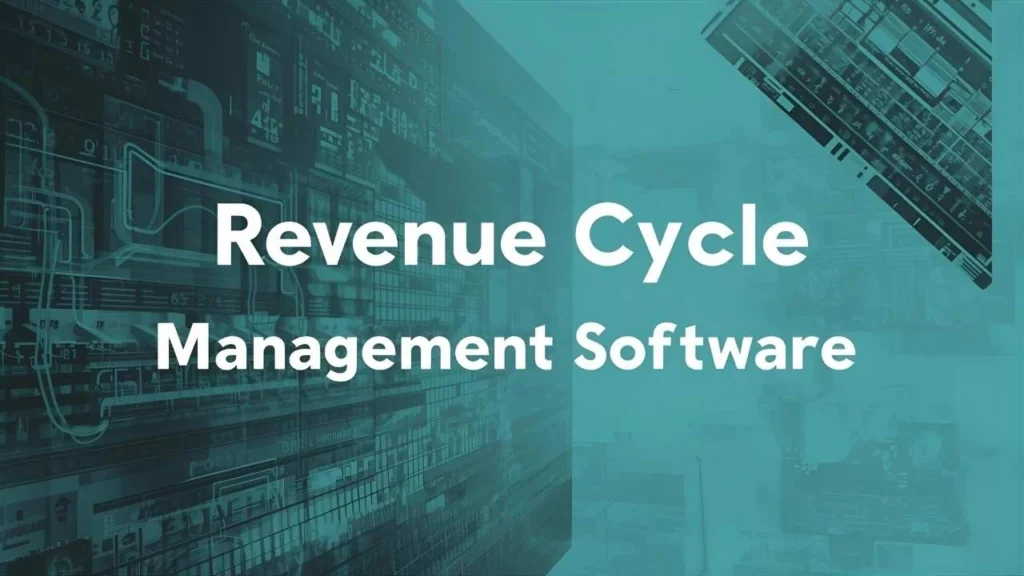
The pressure of organizations to optimize their financial performance and maintain high-quality patient care is growing nowadays. The efficiency of implementing a proper revenue cycle management software is now becoming critical in the streamlining of billing processes, and thus reducing claim denials and maximizing revenue collection. Such advanced revenue cycle management software revolutionize the way medical practices approach all aspects, including patient registration and the end collection of funds, therefore, redefining operational efficiency and profitability of health care establishments.
What is Revenue Cycle Management?
Revenue cycle management software describes the entire process of how healthcare organizations manage patient care episodes by ensuring that they are tracked throughout the process signs from registration all the way to payment receipt. This is a methodical process of scheduling, insurance verification, charge capture, claims submission, payment processing, and accounts receivable services. Modern revenue cycle management software can automate these elaborate processes, making them accurate, compliant, and optimised towards financial performance. The technology is compatible with electronic health records, practice management systems, and billing platforms to combine into one to maximize revenue potential.
Why Revenue Cycle Management is Important
Revenue cycle management software is the economic backbone of successful healthcare institutions, and it directly influences profitability and sustainability in an increasingly complex reimbursement situation.
- Financial Optimization: Creates efficiencies in the billing operations to minimize the denial of the claim, and timely payment of the claim, and optimize reimbursements.
- Operational Efficiency: Eliminates manual processes, streamlines management and administrative load, and allows professionals to work with patients instead of necessarily handling paperwork.
- Compliance Assurance: Ensures compliance with the ever-changing regulations in healthcare, codes, and insurance policies to reduce the risk of an audit.
- Analytics Insights: Offers detailed reporting and data analytics to determine areas of revenue potential, performance indicators, and to inform strategic action.
- Patient Satisfaction: Clears medical bills related to transparency, minimizes payment backs, and improves the total financial experience of the patient due to clear information communication.
Limitations in Revenue Cycle Management Software to Look for
- Healthcare organizations: Advised to evaluate some of the limitations that might hinder the success of long-term operations and the efficacy of the revenue cycle management software.
- Integration issues: The current healthcare networks may make them not interchangeable, leading to establishment of data silos and disruption of work flow in between departments.
- Scalability constraints: Static systems may not be scalable to meet the growth of the patient caseload, new locations or services.
- Fixed e-software platforms: software platforms with fixation may not be the right fit against specialized requirements, specialty workflow processes and organizational priorities.
- Complexity of Training: In some cases overcomplicated interfaces have been noted to cause a lot of training to the staff members, increased time to implement and even reduced user adoption.
- Support Limitations: Low quality of customer service, a long period of technical input/output and slow response ability may significantly impact continuity of operations.
Comparison Table for Revenue Cycle Management Software
| Software Name | Rating | Best Feature |
| CareCloud | 4.8/5 | Advanced Analytics Dashboard |
| Nextech | 4.7/5 | Specialty-Focused Solutions |
| AllegianceMD | 4.6/5 | All-in-One Platform |
| PracticeSuite | 4.5/5 | Customizable Workflows |
| AdvancedMD | 4.4/5 | Comprehensive Practice Management |
| CureMD | 4.3/5 | Multi-Specialty Support |
| Athenahealth | 4.2/5 | Expert Billing Services |
| DrChrono | 4.1/5 | Mobile-First Design |
| EZClaim | 4.0/5 | Flexible Deployment Options |
| Medisoft | 3.9/5 | Cost-Effective Solutions |
| Epic | 3.8/5 | Enterprise Integration |
| Cerner | 3.7/5 | Healthcare Ecosystem |
| NextGen | 3.6/5 | Workflow Automation |
| Kareo | 3.5/5 | Cloud-Based Platform |
| SimplePractice | 3.4/5 | User-Friendly Interface |
Top 10 Revenue Cycle Management Software
CareCloud
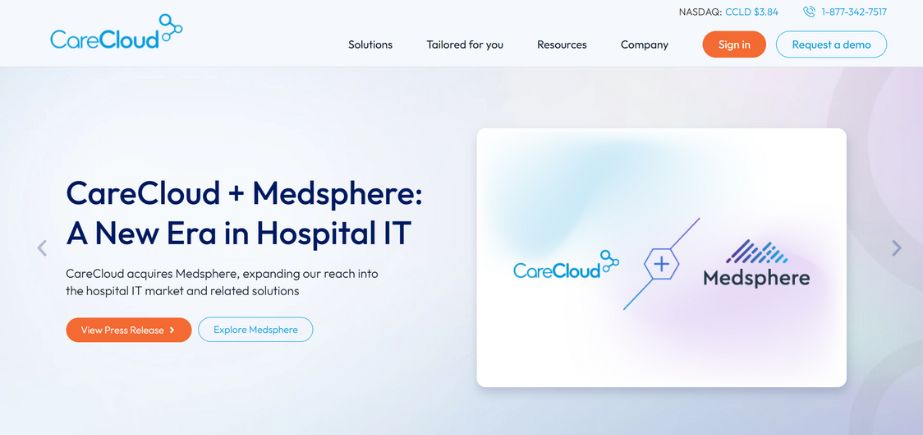
Rating: 4.8/5
Website: https://carecloud.com
Best Use Cases: Scalable practices prioritizing user experience and comprehensive analytics
CareCloud offers an end-to-end revenue cycle management software that has a usable interface and depth of functionality. The system is superior in generating real-time analytics, automated workflow, and integration ability that make healthcare organizations optimize their financial performance. The ease of access and the high level of security are provided by their cloud-based architecture. The platform is strong as it can adjust to the numerous practice sizes and specialties, and at the same time, offers consistency in its performance and support.
Key Features:
- Real-time analytics dashboard
- Automated claim processing
- Patient portal integration
- Customizable reporting tools
- Multi-location support
Pros:
- Intuitive user interface
- Excellent customer support
- Comprehensive feature set
Cons:
- Higher pricing tiers
- Complex initial setup
- Limited offline functionality
Pricing: $349 per provider per month
Nextech
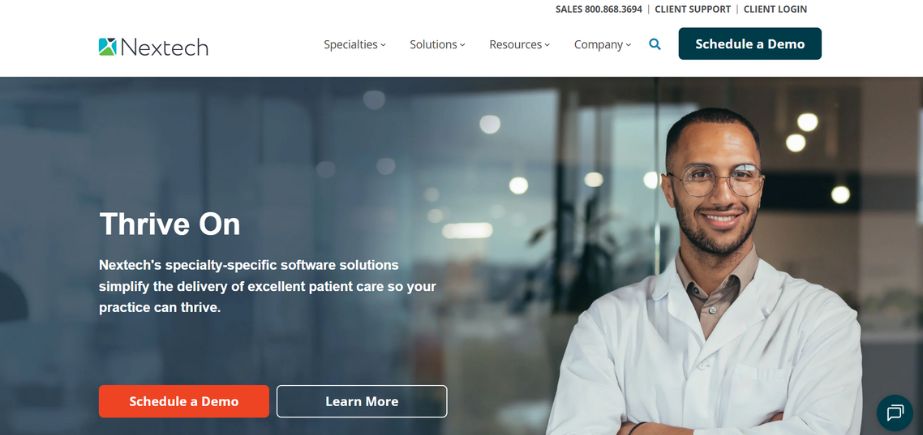
Rating: 4.7/5
Website: https://nextech.com
Best Use Cases: Dermatology, ophthalmology, and plastic surgery specialty practices
Nextech specializes in providing role-specific solutions to meet the requirements of a specific medical specialty, which provide a high degree of functionality to those specific workflow needs. The software combines the use of electronic health records, practice management, and revenue cycle management software into a uniform system that is specifically suited to dermatology, ophthalmology, and plastic surgery office settings. Their field-specific approach makes them the perfect fit when it comes to matching industry-specific needs, compliance, and billing details that generic solutions tend to fail in mitigating successfully.
Key Features:
- Specialty-specific workflows
- Integrated EHR system
- Advanced scheduling tools
- Cosmetic billing features
- Patient engagement portal
Pros:
- Specialty-focused design
- Comprehensive integration
- Industry expertise
Cons:
- Limited specialty coverage
- Higher implementation costs
- Steeper learning curve
Pricing: starts in the range of $100 to $500
AllegianceMD
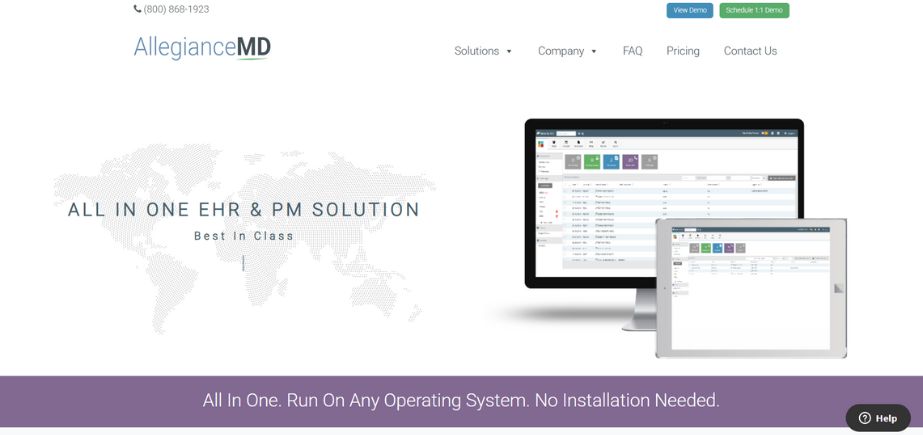
Rating: 4.6/5
Website: https://allegiancemd.com
Best Use Cases: Small to mid-sized practices seeking comprehensive all-in-one solutions
AllegianceMD is an EHR with practice management and a revenue cycle management software integrated in the same software. The system concentrates on providing value in complete functionality, and at the same time ensures that smaller practices can afford it. Their product focus is on easy-to-use non-compromised features, which means they are especially appealing to practices that are moving off of paper or older systems. The role of the platform stands in the fact that it gives an enterprise-level functionality at prices that can be affordable to smaller organizations.
Key Features:
- Integrated EHR platform
- Automated billing workflows
- Patient scheduling system
- Financial reporting tools
- Compliance management
Pros:
- All-in-one solution
- Competitive pricing
- User-friendly design
Cons:
- Limited customization options
- Slower updates
- Basic reporting features
Pricing: From $349 per user/month
PracticeSuite
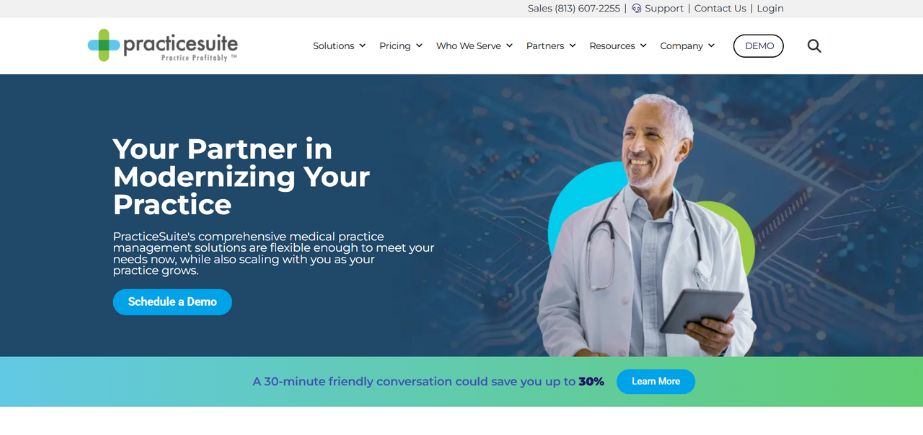
Rating: 4.5/5
Website: https://practicesuite.com
Best Use Cases: Growing practices requiring highly customizable and adaptable workflow solutions
PracticeSuite customisation features such as, customisation of the workflow, reports, interface according to unique operations of the organisation, is one of the features that have propelled the rise of PracticeSuite to the top ranking. It makes the platform to be aware that every practice is different in its operations and thus has the flexibility that it needs to accommodate various process processes. Their modular design allows organizations to incorporate them piecemeal, hence making implementation easier and parts integrally fit into their current operations. This is also particularly useful to practices that have fluctuating or complex requirements.
Key Features:
- Highly customizable workflows
- Modular implementation approach
- Advanced reporting capabilities
- Multi-practice management
- Integration marketplace
Pros:
- Extensive customization options
- Flexible implementation
- Robust integration capabilities
Cons:
- Complex configuration process
- Higher training requirements
- Variable pricing structure
Pricing: starting at $34.95/month for a 3-user bundle
AdvancedMD
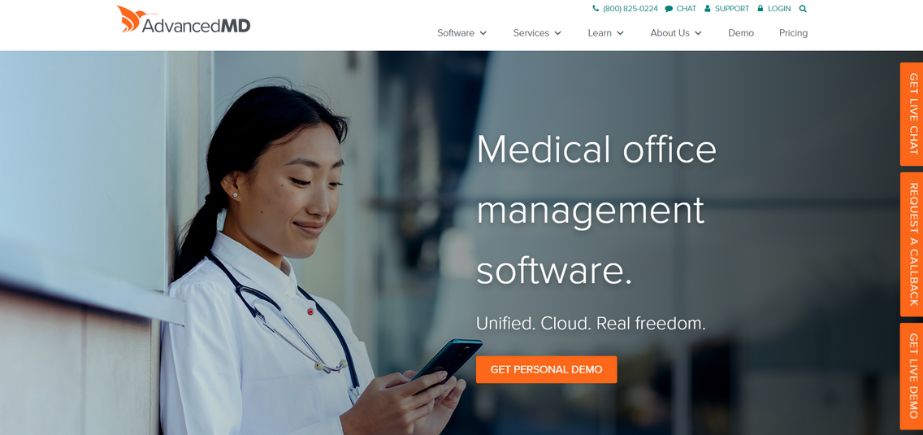
Rating: 4.4/5
Website: https://advancedmd.com
Best Use Cases: Mid to large practices managing complex workflows and multiple locations
AdvancedMD is a higher-end practice management solution which works well in organization where there is more complex structure and workflow involved. Appointment scheduling feature of the platform includes advanced features, including assigning appointments to optimize the process, e.g., setting up appointment reminders, automatic reoccurring appointment, scheduling controls. They are beneficial in that they provide scalable solutions that are able to accommodate a growing practice without diminishing performance and functionality. The robust capabilities of the system allow you to service multiple locations, specialties, and multi faceted billing most likely to be experienced in large organizations.
Key Features:
- Advanced scheduling system
- Multi-location support
- Comprehensive reporting suite
- Automated workflow engine
- Revenue optimization tools
Pros:
- Scalable architecture
- Comprehensive functionality
- Strong technical support
Cons:
- Higher complexity
- Significant training needs
- Premium pricing
Pricing: Contact for a custom quote
CureMD
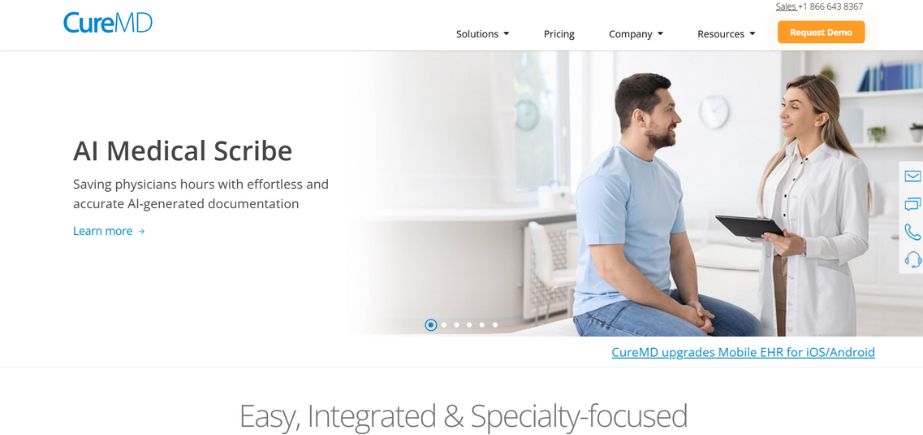
Rating: 4.3/5
Website: https://curemd.com
Best Use Cases: Multi-specialty practices requiring extensive customization and specialty support
CureMD strives to provide flexible solution that is applied to accommodate the different selectivity consideration in the platform. The system understands that multi-specialty practices are faced with unique challenges and offers solutions that help them manage a variety of billing requirements, workflows, and regulatory compliance needs concurrently. They built their platform on flexibility and it unity across departments/ specialties. This methodology is especially useful to organizations of importance to healthcare, which have a multicultural patient population or a multiplicity of service lines.
Key Features:
- Multi-specialty support
- Customizable templates
- Integrated telemedicine
- Advanced analytics
- Mobile accessibility
Pros:
- Multi-specialty capabilities
- Flexible customization
- Comprehensive feature set
Cons:
- Interface complexity
- Implementation challenges
- Variable performance
Pricing: around $195 per month per user
Athenahealth
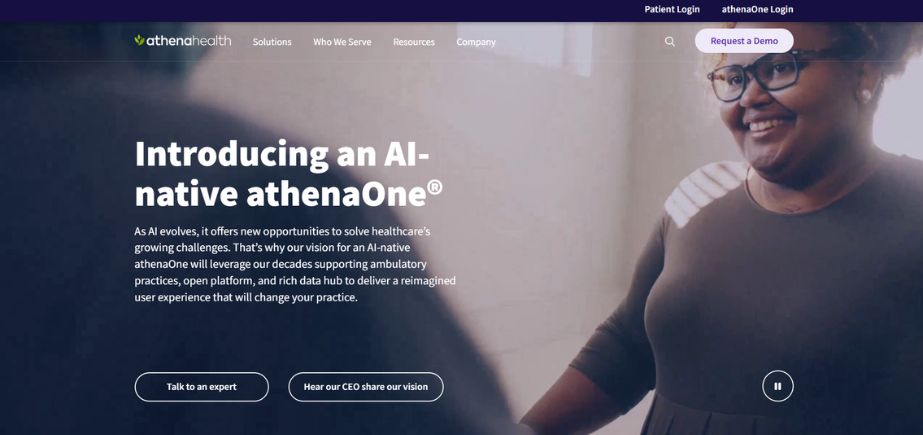
Rating: 4.2/5
Website: https://athenahealth.com
Best Use Cases: Practices seeking expert billing support and network-powered insights
What is unique about Athenehealth is that they have merged the revenue cycle management software with professional services such that practices receive both technological know-how alongside human support to maximize the revenue cycle. By having a network-powered approach, they are in a better position to spot emerging trends, tailor billing strategies, and enhance overall financial results by using data generated by the thousands of practices. The advantage of the platform consists of the fact that it can deliver individual supporting services, as well as actionable insights based on aggregate data. This mix-and-match solution will be attractive to those practices that wish to add technology to professional advice.
Key Features:
- Network-powered insights
- Expert billing services
- Performance benchmarking
- Automated claim processing
- Patient engagement tools
Pros:
- Expert service support
- Network-derived insights
- Strong performance metrics
Cons:
- Higher service costs
- Less customization control
- Dependency on services
Pricing: Contact for a custom quote
DrChrono
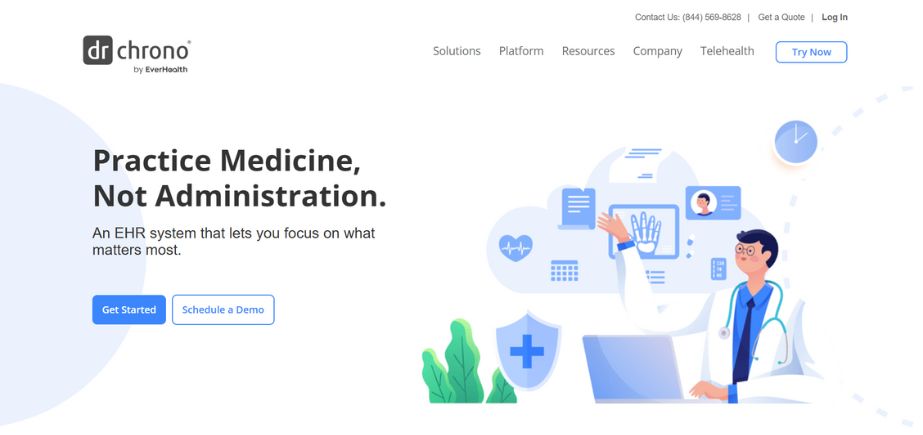
Rating: 4.1/5
Website: https://drchrono.com
Best Use Cases: Mobile-focused practices emphasizing flexibility and point-of-care accessibility
Chrono was the first firm to offer mobile-first functionality of healthcare software, with mobile-based applications offering extensive functionality. The platform appreciates how mobility is becoming pivotal in the provision of healthcare services and thus, all features are fully functional over devices. Their way is about availability, user friendliness, and yet they do not sacrifice functionality. Its mobile-first approach makes it especially appealing to practices that have valued aspects of flexibility, accessibility in remote areas, and the ability to conduct documentation and billing at the point of care.
Key Features:
- Mobile-first design
- iPad integration
- Cloud-based platform
- API marketplace
- Patient check-in tools
Pros:
- Mobile-optimized interface
- Flexible deployment
- Strong API ecosystem
Cons:
- Limited desktop features
- Connectivity dependencies
- Smaller feature set
Pricing: starting around $199 per month
EZClaim
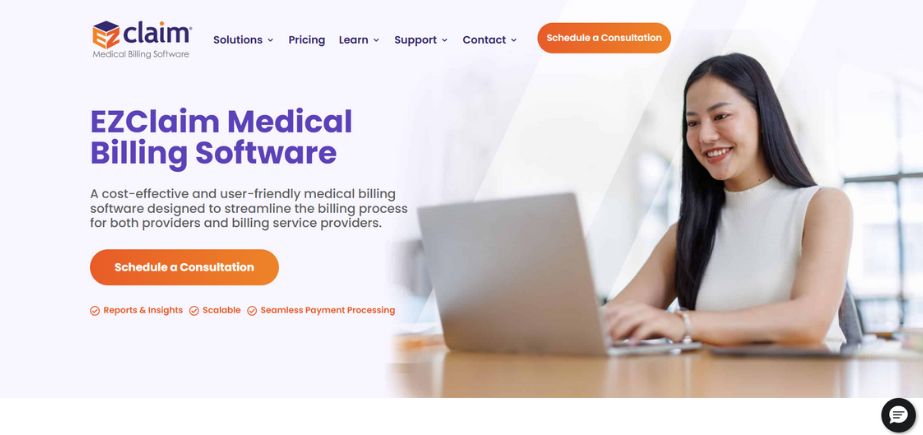
Rating: 4.0/5
Website: https://ezclaim.com/
Best Use Cases: Independent providers seeking flexible deployment options and cost-effective solutions
EZClaim is flexible in its deployment in terms of providing cloud-based and desktop deployment to address various organizational needs and technical specifics. The platform acknowledges that not every practice is ready to go to the cloud and has powerful desktop options, still with the benefits of a cloud solution. They have a pricing mechanism that has a subscription-based and a one-time purchase model to enable the flexibility of different organizational budgets. The modality will be of special interest to freestanding providers and smaller practices with deployment or budgetary limitations.
Key Features:
- Flexible deployment options
- Multiple pricing models
- Comprehensive claim processing
- Patient statement generation
- Reporting dashboard
Pros:
- Deployment flexibility
- Cost-effective options
- Simple implementation
Cons:
- Limited cloud features
- Basic integration options
- Minimal customization
Pricing: $30 per file
Medisoft
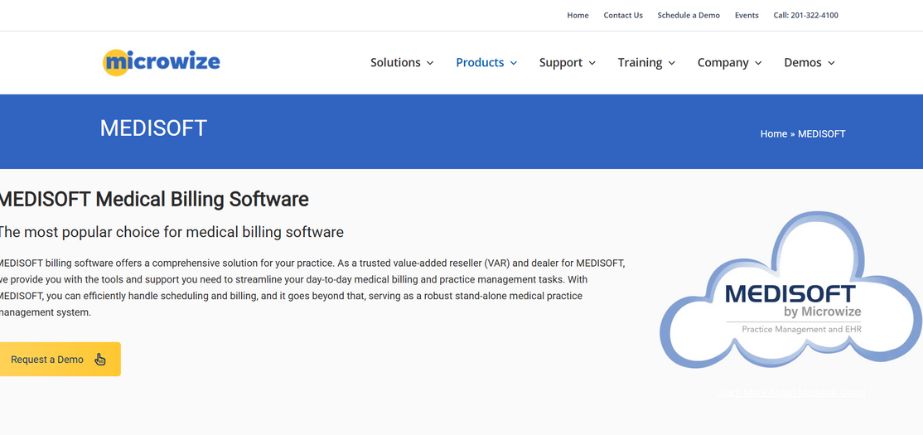
Rating: 3.9/5
Website: https://microwize.com/medisoft/
Best Use Cases: Small practices with limited IT infrastructure requiring straightforward solutions
Low cost, high-quality solutions by Medisoft target the needs of smaller healthcare practices; they do not require the complexity and the added battery or some could say, the added costs associated with high-end solutions. The application is focused on the key functionality of the revenue cycle management at low costs and convenience. They are aimed at being practical and not elaborate, and thus can be affordable to practices having limited capacity or financial means in terms of technical ability. The attractiveness of such a minimalist methodology is that it is appealing to the traditionalist methods that prize cost-efficient and reliable past-tested methodologies over innovation.
Key Features:
- Essential billing functions
- Patient management tools
- Basic reporting features
- Insurance processing
- Payment tracking
Pros:
- Cost-effective pricing
- Simple interface
- Reliable performance
Cons:
- Limited advanced features
- Basic customization
- Minimal integration options
Pricing: Basic at $596
How to Choose the Right Revenue Cycle Management Software
To make the right choice of using the right revenue cycle management software, several factors should be taken into account that could directly affect the success of organizations in the long run and their organizational performance.
- Complexity and Scale of Practice: Examine the current number of patients served, staff, locations, and specialties to be able to decide whether the platform can support the existing volume and the planned growth (ostensible expansion).
- The Need to Integrate: establish how it will interact with all its current electronic health records, acknowledgement management systems, lab connections, and other essential healthcare technologies to ensure they connect with its current systems.
- Budget and Return on Investment Projections: One should also be able to map out the cost in totality within the whole process of implementation, including rates of subscription fees.
Conclusion
The value and care of the healthcare sector are changing rapidly, with the need to have advanced revenue cycle management software that can adapt to dynamic regulations, patient expectations, and financial challenges. Medical technology has evolved to include capabilities that are unprecedented in terms of optimizing operations, financial performance, and patient satisfaction, such as integrated workflow and intelligent automation. The effective implementation should be accompanied by careful organizational needs evaluation, vendor evaluation, and planning of long-term development. With a little research and the right revenue cycle management software, healthcare organizations can jumpstart efficiency, profitability, and quality of patient care by a large margin, serving to strengthen long-term sustainability in a more competitive environment.
Frequently Asked Questions
What is revenue cycle management software?
Revenue cycle management software streamlines the billing functions of healthcare firms, spanning the patient registration stage to the collection of the final payment, to optimize financial operations and decrease workload.
What is the average cost of revenue cycle management computer software?
Pricing is very different on the basis of practice scale and capabilities, with pricing models in both cases as little as $69 per month per user to enterprise solutions models exceeding $500 per user per month.
Does revenue cycle management software have the ability to integrate with others that are in place?
Most newer models are highly integrated with the most well-known EHR systems, but during the selection, you should check this, making sure data flow will not be a problem.
What should be the major features of revenue cycle management software?
The critical functions include automated claim processing, denial management functions, patient portal integration functions, versatile reporting functions, insurance verification, and compliance concerns tools to enhance effective performance.
How long does it take to install revenue cycle management software?
Behind-the-scenes implementation is usually anywhere between 3-6 months, depending on the size of the practice, the level of complexity, data migration requirements, training needs of the staff, and customization requirements.